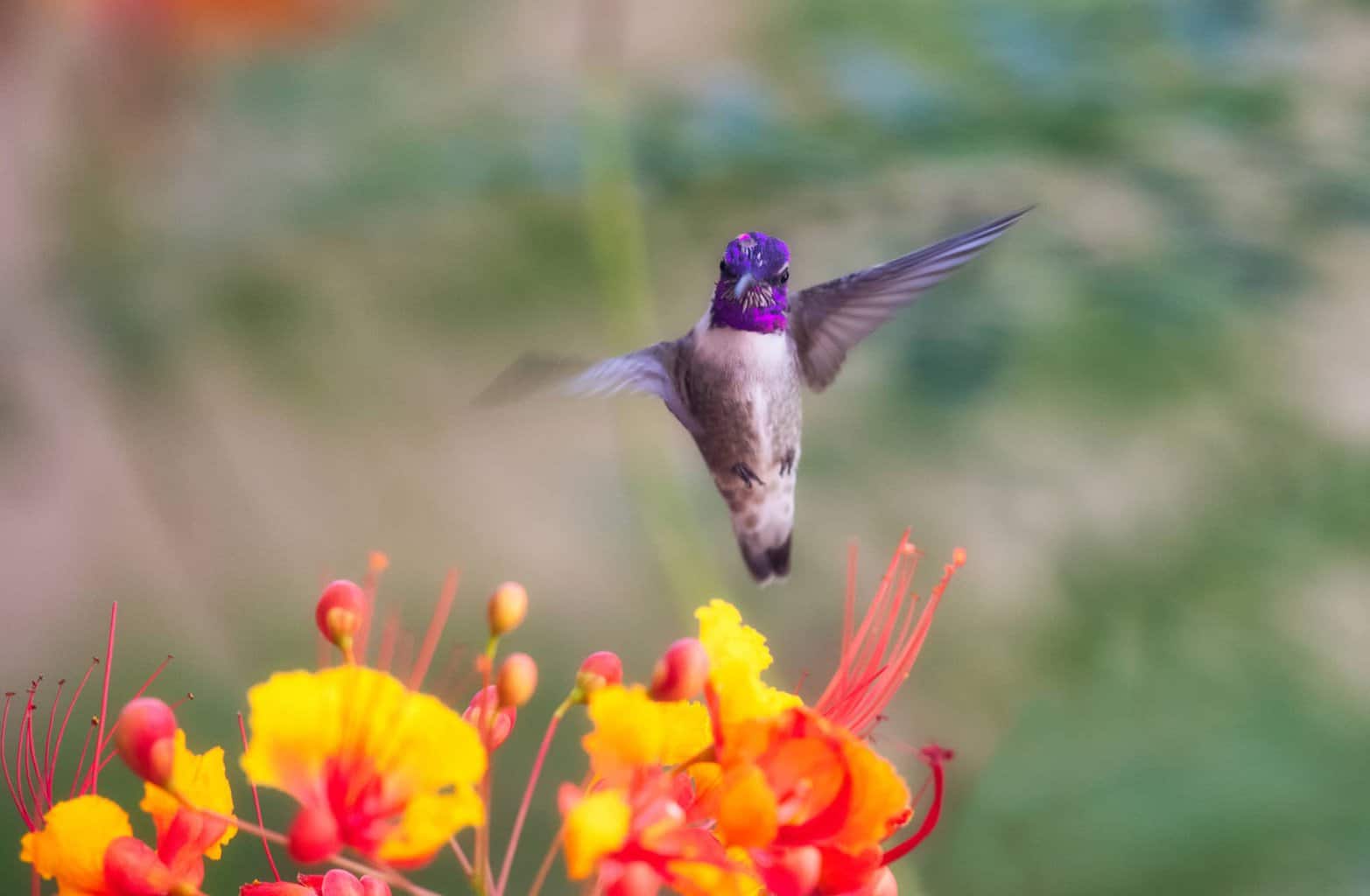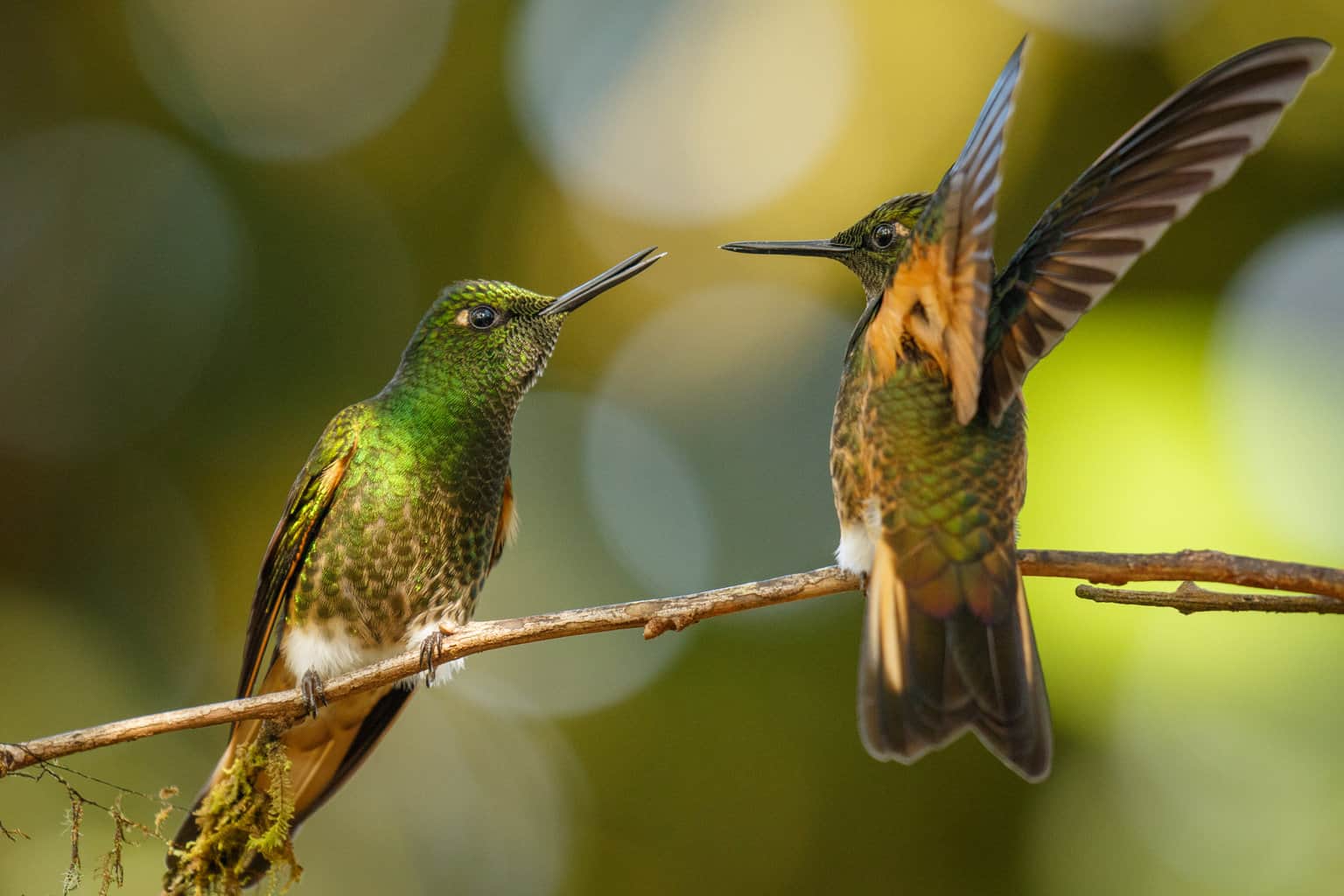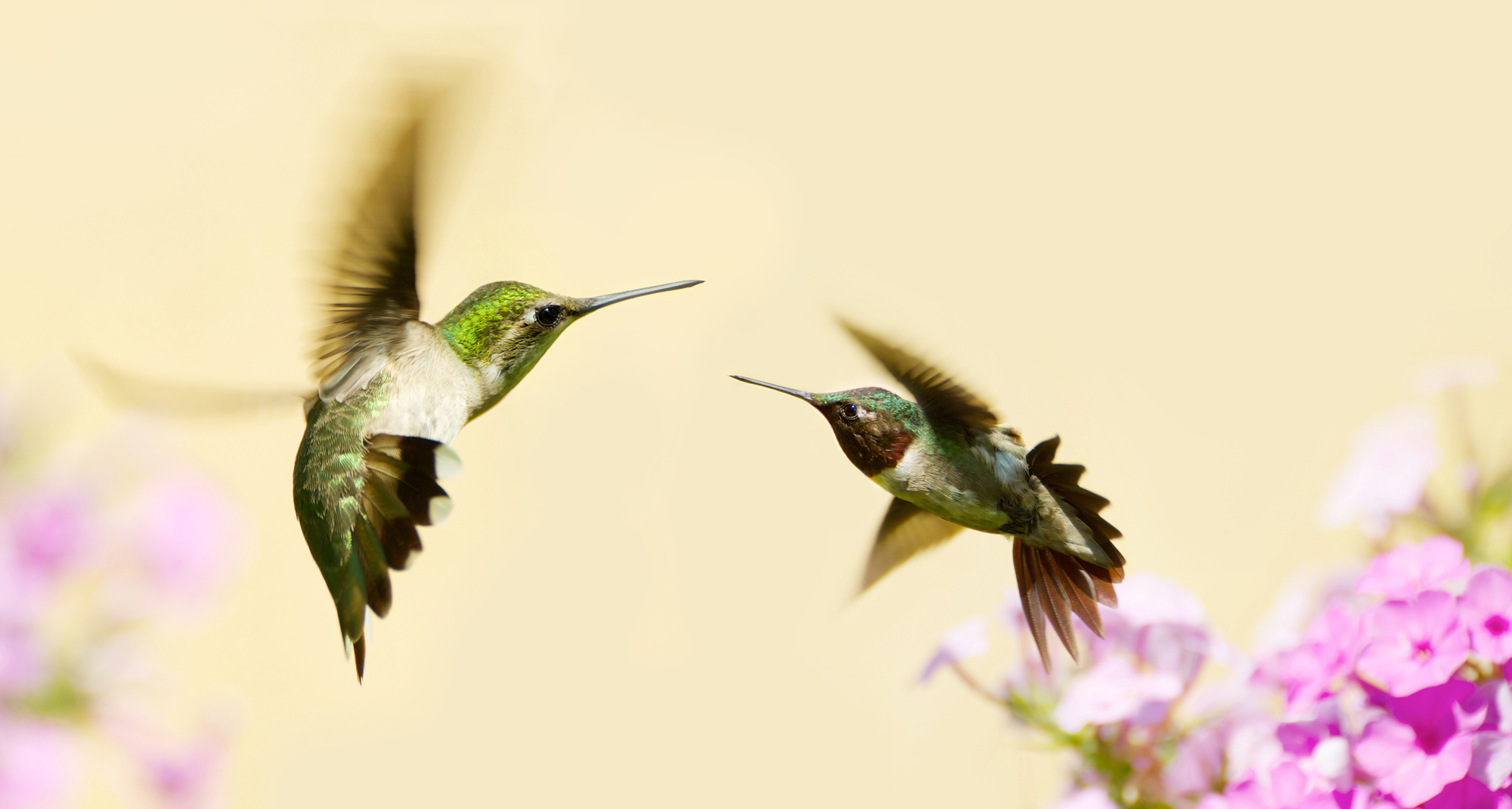In the summertime, my garden is my happy place and when all the beautiful flowers I have planted are in bloom I can easily spend the entire day there and always enjoy doing so.
But I’m never really all alone. It’s also a happy inviting place for the Ruby-throated Hummingbirds that grace my yard every year, here in Missouri.
I always have at the very least three maybe four Ruby-throated Hummingbirds that stick around for the entire Summer… that is if I’m lucky. And all of them have the same thing on their Hummingbird brains and that’s to relentlessly try to claim all the feeders in the neighborhood from sunrise to sunset with their endless flying feats and maneuvers.
But about halfway through summer when all the flowers are in full bloom and the hot sun is beating down and the days are long it becomes a free-for-all, nesting has usually begun and every once in a while a female shows up at the feeder in between sitting on her little eggs.
Then I just know it’s the perfect time to begin to capture as many pictures as I can of the Summer and the flowers, and the Hummers.
I always find a shady spot under a tall sunflower or two, ones that I planted just for them and the other birds, hoping that they will fly in and feed so I can get the best and most memorable pictures to last me through the long winter months.
They love Zinnias! On this day they were fighting, as usual, over all the flowers and the only feeder that was hanging in the garden.
I had my eye on the garden boss, aka Hummershine…yeah I named him, I never thought I’d be one of those people that name their Hummingbirds that visit every year, but here I am. Anyway, there he was sitting up in the tree frantically looking every which way in his nervous Hummershine way, keeping an eye out for all intruders.
Sure enough one showed up. Boy, did I feel sorry for him, after all, Hummershine’s nectar is only the best mix of sugar to water in the neighborhood, so the usual confrontation took place – a lot of chatter and beak jabbing and grabbing. I simply couldn’t keep track of the mayhem, as their speed is faster than the human eye.
When suddenly he dropped to the ground out of the sky, flattened out on the edge of one of my raised beds, not moving. Of course, my heart sank and I thought the worst.
Was this it for Hummershine?
So, I quickly looked at him through my camera lens. At first, I couldn’t figure out if he was okay or hurt and then I realized he must just be sunbathing, just soaking up the warmth of the sun, with his little eyes closed and his beak pointed toward the sun.
I quickly got up and walked toward him, clicking away and taking pictures before he realized I was right next to him and up and away he flew. Whew! For a minute there I thought he had bit the dust.
But I guess he just needed a quick charge. It was an amazing sight to see and to closely observe.
I read that they do this sometimes after a bath or to keep them bug-free, after all, he’s got to keep his feathers looking their best for the ladies, you can’t have any of those gleaming feathers out of place, now, can you?
Or maybe he was just basking in the glory of victory. Another day, another intruder taken out, or then again maybe he was just soaking up the sun.
Are Hummingbirds Territorial?
Everyone who has spent even a little time watching hummingbirds in their garden will soon determine that hummingbirds can indeed be territorial.
Many of the behaviors commonly witnessed in gardens where hummingbirds are found relate to territory marking and the defense of a patch, feeder, nest, or other particular areas or resources.
If you are wondering whether hummingbirds are territorial, however, the answer is a little more complex than a simple ‘yes’.
Which Hummingbirds Are Territorial?

Those of us who have spent any time at all observing hummingbirds around the flowers in our gardens or sugar-water-filled nectar feeders will have noted that these small, beautiful birds can have an aggressive side.
But do all hummingbirds become aggressive when guarding their territory or food sources, or just some? Are all hummingbirds territorial, or are some more so than others?
All hummingbird species exhibit territorial behaviors to some degree. However, the truth is that some species are more known for territorial aggression than others.
Rufous hummingbirds, for example, have a reputation for having a bad temper when other hummingbirds invade their patch.
Non-migrating species tend to be a little less territorial. But even hummingbirds that do not migrate have also been known to exhibit territorial behavior at various times of the year.
Another thing that it is pertinent to ask is whether the sex of the bird influences how territorial they can become, and the types of territorial behavior they exhibit.
Males are generally more notorious for territorial behaviors than females. They are most likely to exhibit territorial behavior around backyard feeders or flowers.
Females can also be territorial, however, and display defensive behavior, especially around nests and when defending their young.
Another thing that influences how territorial hummingbirds are is their age and stage in their lifecycle.
Ruby-throated hummingbird males are particularly territorial in spring as they arrive during spring migration. And territorial exhibiting is most common during the breeding period, in late spring and early summer.
Some hummingbirds however will up the ante again as the time for fall migration approaches, and they urgently need to fuel up for their long journeys. Rufous hummingbirds, for example, are known to exhibit aggressive actions well into the fall.
However, young ruby-throated hummingbirds born during the breeding season tend not to be overly territorial. Nor do they compete extremely over feeders.
They have no burning need to compete over territory because they will not mate until spring the following year. So they have a more relaxed attitude and can even share quite willingly on occasion.
One final thing to note is that birds have individual personalities just as we do. Though we may not always be able to tell the difference between individuals not of our species, differences in personality and temperament do exist.
Some bully hummingbirds are simply more dominant, or more aggressive by nature, while others can tend to be calmer. If there are a lot of fights in a particular area, this may sometimes simply be down to the presence of a more feisty bird.
Why Are Hummingbirds Territorial?
Hummingbirds are small birds that can achieve amazing things. But they can only achieve those things when they can refuel regularly – and can find the food sources they need to meet their incredibly high energy needs.
Nectar from flowers in a natural environment is something that can be abundant in some areas, and scarce in others.
So hummingbirds are programmed to hold onto rich areas when they come across them, to secure their survival by trying to keep the (often limited) resources that are present for themselves.
Establishing and controlling a territory is also very important to breeding males because females will judge males not only on their courtship displays but also on the fitness of the territory they hold. Females will look for males with territory rich in food sources, and close to their nesting area.
Males need good territories therefore not only to feed themselves but also to effectively continue their line during the breeding season.
Females can also become territorial in defense of their nests and young – seeing off others to ensure the success of their procreation efforts and to ensure that their offspring get the resources they need.
Hummingbirds’ territorial natures are simply the product of the world they inhabit, the hardships they must sometimes endure, and their natural impulse for survival and the perpetuation of their bloodlines.
Territorial behavior in hummingbirds, as in other birds, is natural and so ingrained in them that even when there is abundant food and rich pickings, they still have the impulse to keep space and resources for themselves.
This is why hummingbirds can be territorial over feeders in a backyard, even when there is plenty of nectar and sugar-water solution to go around.
What Territorial Behaviors Do Hummingbirds Exhibit?

Now that we have established which hummingbirds are territorial, when, and why, let’s take a closer look at what we mean when we talk about territorial behavior.
Audible Alerts
Making themselves heard is often the first sign of a hummingbird taking up a territory and defending it against all comers.
Hummingbirds will often raise the volume of their calls and songs to advertise the fact that territory is ‘taken’.
They use loud, quick chittering and buzzing noises to let others know not to intrude, or to warn off other hummingbirds that stray too close.
Body Language
Territorial hummingbirds may also alter their posture and use body language to tell others to stay off their patch.
Male hummingbirds might flare their gorgets, to show off their colors more vividly and display their strength and health.
Aggressive postures linked to territoriality might also include flaring their tails, raising the feathers on their crowns, spreading or raising their wings, and making themselves seem as large as possible.
Some hummers might point their bills at an intruder on their territory like a swordsman pointing their weapon at an enemy.
Aggressive Dives
An angry hummingbird may also make movements in an attempt to scare off or get rid of unwelcome guests on their patch. Aggressive dives, for example, can be a feature of a territorial display.
This involves hovering before an intruder, then soaring high above before diving straight down, almost directly at them. An auditory warning is typically given at the same time.
Giving Chase
A dominant hummingbird defending its territory will also often charge at invading birds and chase after them to drive them further from a feeder, food source, or a particular area.
Often, the birds will also emit a series of angry chirps and other sounds as they chase an intruder away from their territory.
Fighting
Though fighting is the last resort in territorial defense, with hummingbirds, it can happen frequently – especially between two males.
When hummingbirds fight, they typically use their bills and talons as weapons. They also ram their enemies in flight, and can seriously injure or even kill other birds as they seek to retain their territory and their dominance.
Are Hummingbirds Defending Their Territory Aggressive To Humans?

While they can often attack one another, hummingbirds are not known to attack humans. They know that we are not a threat to them and don’t compete with them for the resources they need. Of course, these small birds could not pose a risk even were they to attack.
But though territorial aggression won’t typically be directed towards humans, hummingbirds that are fed from feeders regularly have been known to become tamer.
Sometimes, they may use some of the same aggressive moves to get people to fill a feeder more quickly and to demand their nectar, flying very close to us very quickly and making a lot of noise to get what they want.
How to Prevent Fights Over Hummingbird Feeders
Hummingbirds competing over hummingbird feeders can establish territory and prevent other hummingbirds from feeding.
So if you want to help as many hummingbirds as possible where you live, it is important to try to make sure that one hummingbird does not dominate and that as many birds can feed as possible.
The best strategy is to make sure you diversify the food sources available – creating abundance by planting native flowers that bloom prolifically all year round, especially during key periods. Creating rich habitats for hummingbirds in different parts of your garden can help you provide for all.
It is also a good idea to place hummingbird feeders. You should place feeders in groups in multiple locations in your garden – ideally not within sight of each other.
Don’t place a single feeder with multiple ports, but rather more than one single port feeder. Spread these out across your space and a single hummingbird will struggle to defend the whole territory. They will typically then give up and expend less energy on aggressive territorial behavior.

